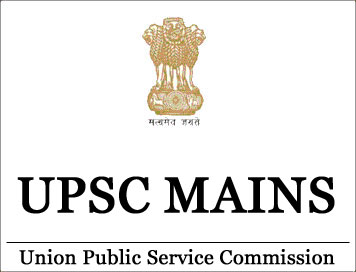(HOT) UPSC Current Affairs 2025 PDF
NEW! The Gist (OCT-2025) | E-BOOKS
UPSC Mains Exam Syllabus - Zoology Optional

UPSC Mains Exam Syllabus - Zoology (Optional)
::Paper – 1::
1. Non-chordata and Chordata :
(a) Classification and relationship of various phyla up to subclasses: Acoelomate and Coelomate, Protostomes and Deuterostomes, Bilateria and Radiata; Status of Protista, Parazoa, Onychophora and Hemichordata; Symmetry.
(b) Protozoa: Locomotion, nutrition, reproduction, sex; General features and life history of Paramaecium, Monocystis. Plasmodium and Leishmania.
(c) Porifera: Skeleton, canal system and reproduction.
(d) Cnidaria: Polymorphism, defensive structures and their mechanism; coral reefs and their formation; metagenesis; general features and life history of Obelia and Aurelia.
(e) Platyhelminthes: Parasitic adaptation; general features and life history of Fasciola and Taenia and their-Pathogenic symptoms.
(f) Nemathelminthes: General features, life history, parasitic adaptation of Ascaris andWuchereria.
(g) Annelida: Coelom and metamerism; modes of life in polychaetes; general features and life history of Nereis, earthworm and leach.
(h) Arthropoda: Larval forms and parasitism in Crustacea; vision and respiration in arthropods (Prawn, cockroach and scorpion); modification of mouth, parts in insects (cockroach, mosquito, housefly, honey bee and butterfly), metapmor phosis in insect and its hormonal regulation, socialbehaviour ofApis and termites.
(i) Molluscs: Feeding, respiration, locomotion, general features and life history of Lamellidens, Pila and Sepia. Torsion and detorsion in gastropods.
(j) Echinodermata: Feeding, respiration, locomotion, larval forms, general features and life history of Asterias.
(k) Protochordata: Origin of chordates; general features and life history of Branchiostoma and Herdmania.
(l) Pisces: Respiration, locomotion and migration.
(m) Amphibia: Origin of tetrapods, parental care, paedomorphosis.
(n) Reptilia; Origin of reptiles, skull types, status of Sphenodon and crocodiles.
(o) Aves: Origin of birds, flight adaptation, migration.
(p) Mammalia: Origin of mammals, dentition, general features of egg laying mammals, pouchedmammals, aquatic mammals and primates, endocrine glands (pituitary, thyroid, parathyroid, adrenal, pancreas, gonads) and their interrelationships.
(q) Comparative functional anatomy of various systems of vertebrates. (integument and its derivatives, endoskeleton, locomotory organs, digestive system,. respiratory system, circulatory system including heart and aortic arches, urinogenital system, brain and sense organs (eye and ear).
2. Ecology :
(a) Biosphere: concept of biosphere; biomes, Biogeochemical cycles, Human induced changes in atmosphere including green house effect, ecological succession, biomes and ecotones, community ecology.
(b) Concept of ecosystem; structure and function of ecosystem, types of ecosystem, ecological succession, ecological adaptation.
(c) Population; characteristics, population dynamics, population stabilization.
(d) Biodiversity and diversity conservation of natural resources.
(e) Wildlife of India.
(f) Remote sensing for sustainable development.
(g) Environmental biodegradation; pollution and its impact on biosphere and its prevention.
3. Ethology :
(a) Behaviour: Sensory filtering, responsiveness, sign stimuli, learning, and memory, instinct, habituation, conditioning, imprinting.
(b) Role of hormones in drive; role of pheromones in alarm spreading; crypsis, predator detection, predator tactics, social hierarchies in primates, social organization in insects;
(c) Orientation, navigation, homing; biological rhythms: biological clock, tidal, seasonal and circadian rhythms.
(d) Methods of studying animal behaviour including sexual conflict, selfishness, kinship and altruism.
4. Economic Zoology :
(a) Apiculture, sericulture, lac culture, carp culture, pearl culture, prawn culture, vermiculture.
(b) Major infectious and communicable diseases (malaria, filaria, tuberculosis, cholera and AIDS) their vectors, pathogens and prevention.
(c) Cattle and livestock diseases, their pathogen (helminths) and vectors (ticks, mites, Tabanus, Stomoxys).
(d) Pests of sugar cane (Pyrilla perpusiella), oil seed (Achaeajanata) and rice (Sitophilus oryzae).
(e) Transgenic animals.
(f) Medical biotechnology, human genetic disease and genetic counselling, gene therapy.
(g) Forensic biotechnology.
5. Biostatistics :
Designing of experiments; null hypothesis; correlation, regression, distribution and measure of central tendency, chi square, student-test, F-test (one-way & two-way F-test).
6. Instrumentation methods :
(a) Spectrophotometer, phase contrast and fluorescence microscopy, radioactive tracer, ultra centrifuge, gel . electrophoresis, PCR, ELISA, FISH and chromosome painting.
(b) Electron microscopy (TEM, SEM).
IAS Mains General Studies Study Kit
::Paper - 2::
1. Cell Biology :
(a) Structure and function of cell and its organelles (nucleus, plasma membrane, mitochondria, Golgi bodies, endoplasmic reticulum, ribosomes and lysosomes), cell division (mitosis and meiosis), mitotic spindle and mitotic apparatus, chromosome movement chromosome type ploytene and lambrush, organization of chromatin, heterochromatin, Cell cycle regulation.
(b) Nucleic acid topology, DNA motif, DNA replication, transcription, RNA processing, translation, protein foldings and transport.
2. Genetics :
(a) Modern concept of gene, split gene, genetic regulation, genetic, code.
(b) Sex chromosomes and their evolution, sex determination in Drosophila and human.
(c) Mendel’s laws of inheritance, recombination, linkage, multiple alleles, genetics of blood groups, pedigree analysis, hereditary diseases in human.
(d) Mutations and mutagenesis.
(e) Recombinant DNA technology, plasmid, cosmid, artificial chromosomes as vectors, transgenics, DNA cloning and whole animal cloning (principles and methods).
(f) Gene regulation and expression in prokaryotes and eukaryotes.
(g) Signal molecules, cell death, defects in signaling pathway and consequences.
(h) RFLP, RAPD and AFLF and application of RFLP in DNA finger-printing, ribozyme technologies, human genome project, genomics and protomics.
3. Evolution :
(a) Theories of origin of life.
(b) Theories of evolution; Natural selection, role of mutation in evolution, evolutionary patterns, molecular drive, mimicry, variation, isolation and speciation.
(c) Evolution of horse, elephant and human using fossil data.
(d) Hardy-Weinberg Law.
(e) Continental drift and distribution of animals.
4. Systematics :
Zoological nomenclature, international code, cladistics, molecular taxonomy and biodiversity.
5. Biochemistry :
(a) Structure and role of carbohydrates, fats, fatty acids, cholesterol, proteins and amino-acids, nucleic acids. Bioenergetics.
(b) Glycolysis and Krebs cycle, oxidation and reduction, oxidative phosphorylation; energy conservation and release, ATP, cycl cyclic AMP-its structure and role.
(c) Hormone classification (steroid and peptide hormones), biosynthesis and functions.
(d) Enzymes: types and mechanisms of action.
(e) Vitamins and co-enzymes.
(f) Immunoglobulin and immunity.
6. Physiology (with special reference to mammals) :
(a) Composition and constituents of blood; blood groups and Rh factor in human; factors and mechanism of coagulation; iron metabolism, acid-base balance, thermo regulation, anticoagulants.
(b) Haemoglobin: Composition, types and role in transport of oxygen and carbon dioxide.
(c) Digestion and absorption: Role of salivary glands, liver, pancreas and intestinal glands.
(d) Excretion: nephron and regulation of urine formation; osmo-regulation and excretory product.
(e) Muscles: Types, mechanism of contraction of skeletal muscles, effects of exercise on muscles.
(f) Neuron: nerve impulse—its conduction and synaptic transmission; neurotransmitters.
(g) Vision, hearing and olfaction in human.
(h) Physiology of reproduction puberty and menopause in human.
7. Developmental Biology :
(a) Gametogenesis; spermatogenesis, composition of semen, in vitro and in vivo capacitation of mammalian sperm, Oogenesis, totipotency; fertilization, morphogenesis and morphogen; blastogeneis, establishment of body axes formation, fate map, gestulation in frog and chick; genes in development in chick homeotic genes, development of eye and heart, placenta in mammals.
(b) Cell lineage, cell to cell interaction, Genetic and induced teratogenesis, role of thyroxine in control of metamorphosisin amphibia, paedogenesis and neoteny, cell death, aging.
(c) Developmental genes in human, in vitro fertilization; and embryo transfer; cloning.
(d) Stem cells: Sources, types and their use in human welfare.
(e) Biogenetic law.


